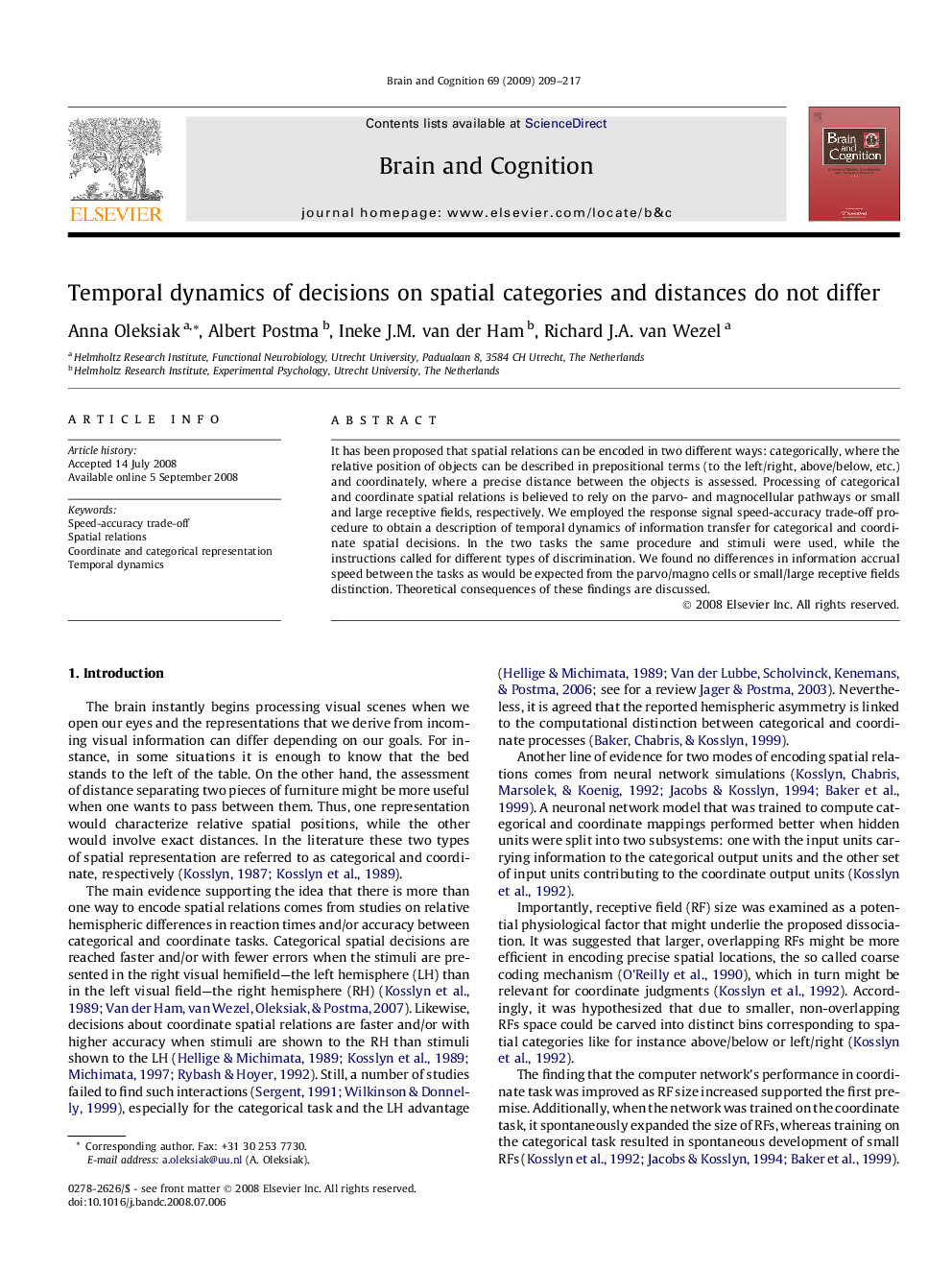| Article ID | Journal | Published Year | Pages | File Type |
|---|---|---|---|---|
| 10455747 | Brain and Cognition | 2009 | 9 Pages |
Abstract
It has been proposed that spatial relations can be encoded in two different ways: categorically, where the relative position of objects can be described in prepositional terms (to the left/right, above/below, etc.) and coordinately, where a precise distance between the objects is assessed. Processing of categorical and coordinate spatial relations is believed to rely on the parvo- and magnocellular pathways or small and large receptive fields, respectively. We employed the response signal speed-accuracy trade-off procedure to obtain a description of temporal dynamics of information transfer for categorical and coordinate spatial decisions. In the two tasks the same procedure and stimuli were used, while the instructions called for different types of discrimination. We found no differences in information accrual speed between the tasks as would be expected from the parvo/magno cells or small/large receptive fields distinction. Theoretical consequences of these findings are discussed.
Related Topics
Life Sciences
Neuroscience
Cognitive Neuroscience
Authors
Anna Oleksiak, Albert Postma, Ineke J.M. van der Ham, Richard J.A. van Wezel,
